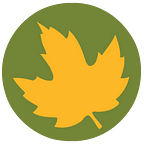Woodland wildflowers and the creatures they depend on
Janean Curfman, Interpretive Naturalist
Tiny ephemeral wildflowers carpet the forest floor in spring, providing important early food sources for pollinators. These delicate blooms often depend on specialized partnerships for survival.
Spring beauties use bright lines called nectar guides to direct pollinators where to land. Maroon-colored (and slightly smelly) red trilliums and wild ginger imitate the favorite meals of flies, enticing them to aid in pollination.
Once pollinated, some flowers rely on animals to disperse their seeds. The mayapple’s fruits are eaten by box turtles. As they travel, turtles deposit seeds, which are more likely to sprout thanks to their digestion! Other flowers such as trillium, trout lily and bloodroot entice ants to pick up their seeds by producing a fatty appendage called an elaiosome. Ants pick up seeds, take them home to eat the tasty treat attached and discard the rest, thus planting more flowers!
When admiring spring wildflowers, remember that they have just a few short weeks to complete their life cycle before falling dormant beneath the shade of the trees. For this reason, it can take some flowers, such as trout lily, up to seven years to produce their first blooms! So take only photos, and enjoy the beauty of spring.
To see a wide array of woodland ephemerals, consider a trip to Liberty Park, Furnace Run Metro Park or Hampton Hills Metro Park in April.
For more stories like this, check out Green Islands magazine, a bi-monthly publication from Summit Metro Parks. Summit County residents can sign up to receive the publication at home free of charge.
